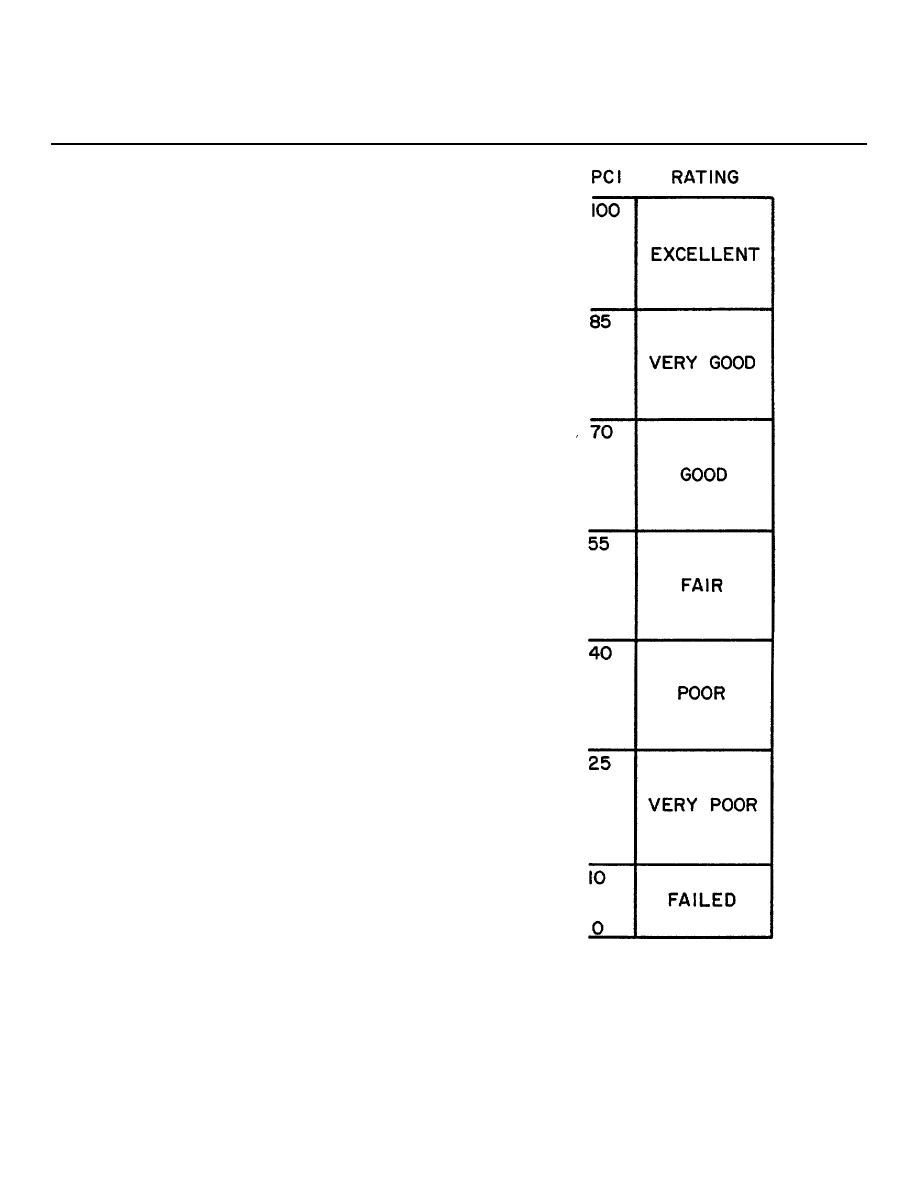
TM 5-623
CHAPTER 3
PAVEMENT CONDITION SURVEY AND RATING PROCEDURES
3-1. Introduction
An important component of PAVER is the pavement
condition survey and rating procedures. Data obtained
from these procedures are the primary basis for
determining M&R requirements and priorities. This
chapter explains how to conduct a condition survey
inspection and how to determine the pavement condition
index (PCI). It is essential to have a thorough working
knowledge of the PCI and condition survey inspection
techniques.
3-2. Pavement condition rating
Pavement condition is related to several factors,
including structural integrity, structural capacity,
roughness, skid resistance/hydroplaning potential, and
rate of deterioration. Direct measurement of all of these
factors requires expensive equipment and highly trained
personnel. However, these factors can be assessed by
observing and measuring distress in the pavement.
a. PCI. The pavement condition rating is based on
the PCI, which is a numerical indicator based on a scale
of 0 to 100.
The PCI measures the pavement's
structural integrity and surface operational condition. Its
scale and associated ratings are shown in figure 3-1.
b. Determination of PCI. The PCI is determined by
measuring pavement distress. The method has been
field tested and has proven to be a useful device for
determining M&R needs and priorities.
3-3. Pavement inspection.
a. General.
Before a pavement network is
inspected, it must be divided into branches, sections,
and sample units as described in chapter 2. Once this
division is complete, survey data can be obtained and
the PCI of each section determined.
b. Inspection procedures for jointed concrete
pavement sections. There are two methods which may
be used to inspect a pavement. Both methods require
that the pavement section be divided into sample units.
The first method-entire section inspection-requires that
all sample units of an entire pavement section be
inspected. The second method-inspection by sampling-
requires that only a portion of the sample units in a
section be inspected. For both methods, the sample
units must be assigned sample unit numbers.
Figure 3-1. PCI scale and condition rating.
3-1



 Previous Page
Previous Page
